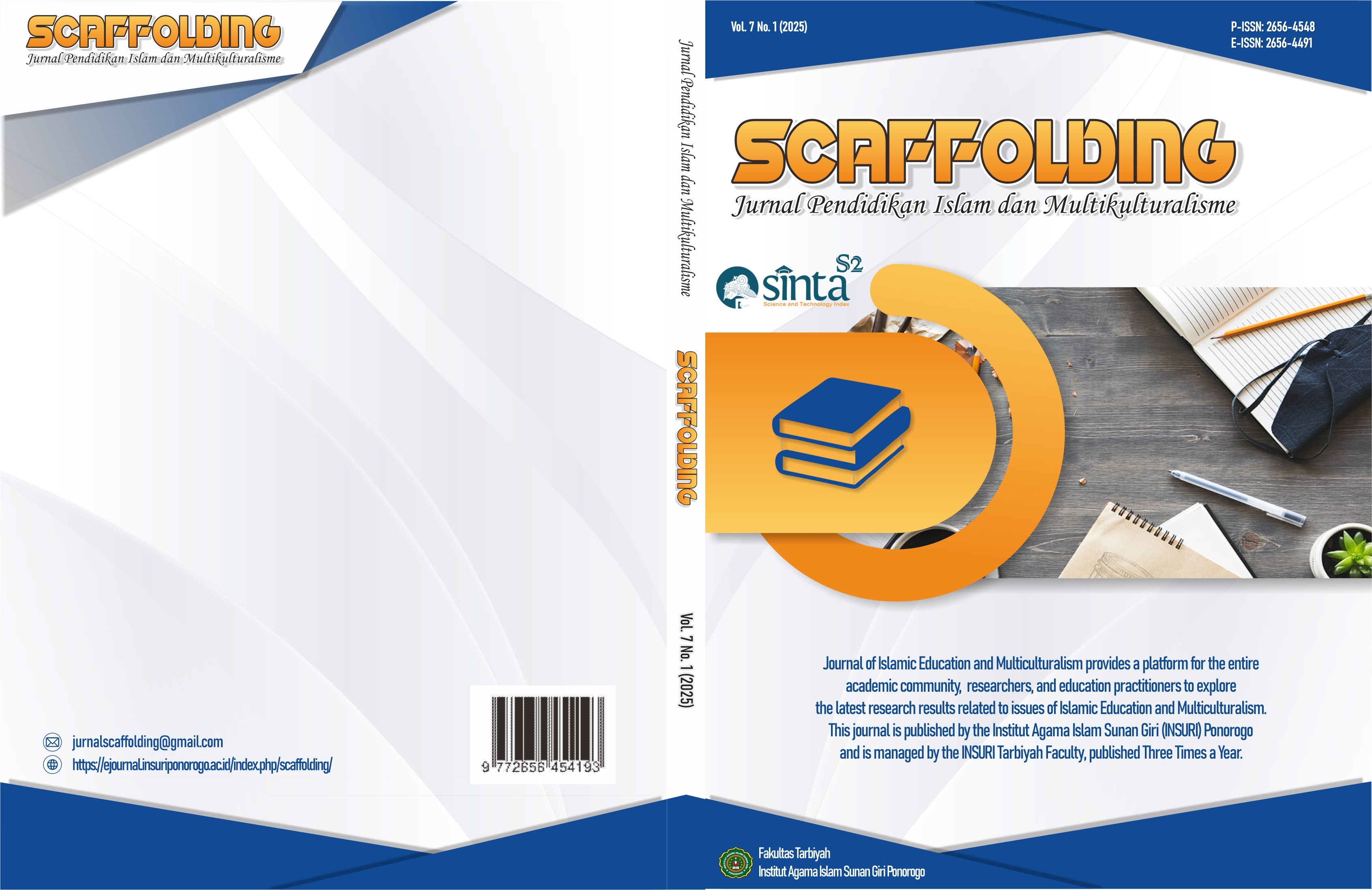Reconstruction of the Ancestral Sajen Tradition by Buddhists
DOI:
https://doi.org/10.37680/scaffolding.v7i1.6609Keywords:
Reconstruction, Ancestral Sajen, TraditionAbstract
This study aims to describe the implementation of the ancestral offering tradition and analyze the reconstruction of the ancestral offering tradition by the Buddhists. The type of qualitative research with a case study approach. Research at Dharma Dwipa Temple, Sodong, Ponorogo. Data collection techniques used observation, interviews, and documentation. Data analysis used the Milles and Huberman model. Test the validity of the data with triangulation of techniques and sources. The results of the study found that the offering tradition was carried out in various celebration events. Behavior towards the offering tradition describes the cultural life of the Javanese people, which is inseparable from ritual symbols. The reconstruction that occurs in the offering tradition refers to the concept of incorporating several innovations without changing their original nature and characteristics. Changes that occur in the offering tradition lead to three principles, namely: 1) understanding the values of the offering tradition, 2) adjusting the elements (means) of offerings, and 3) integrating into Buddhist rituals. The Buddhist offering tradition refers to the practice of Buddhist teachings, namely the Pattidāna tradition. The Tirokudda
Downloads
Published
How to Cite
Issue
Section
License
Authors who publish with this journal agree to the following terms:
Authors retain copyright and grant the journal right of first publication with the work simultaneously licensed under a Creative Commons Attribution-NonCommercial 4.0 International License that allows others to share the work with an acknowledgement of the work's authorship and initial publication in this journal.
Authors are able to enter into separate, additional contractual arrangements for the non-exclusive distribution of the journal's published version of the work (e.g., post it to an institutional repository or publish it in a book), with an acknowledgement of its initial publication in this journal.
Authors are permitted and encouraged to post their work online (e.g., in institutional repositories or on their website) prior to and during the submission process, as it can lead to productive exchanges, as well as earlier and greater citation of published work.



